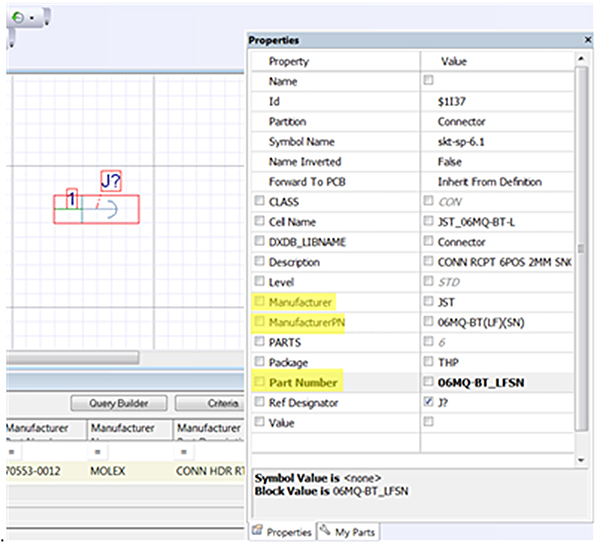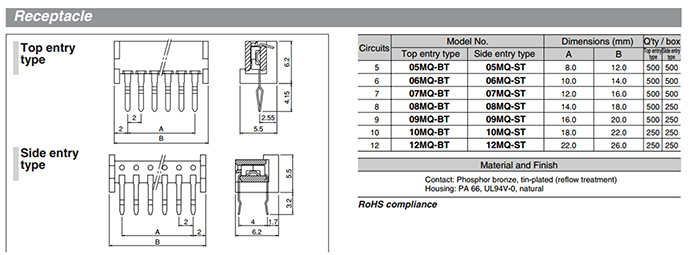
It all starts with the right part number – or numbers.
The most important part of any building is its foundation. When it comes to electronics design, the PCB component library is the foundation of the project. A well-planned library can enable a design to progress smoothly and quickly. But a poorly implemented library can make a project tedious and even introduce errors that can cause electrical or manufacturing problems that are costly to fix. Let’s look at setting up, or adding to a library.
Before the first schematic symbol ever touches the first sheet of your design, set up your project library. This is a time-consuming and tedious process, but when it comes to setting your component properties, here are 12 to pay special attention to. It will make life a lot easier down the road.
- Part number. Every electrical component starts out with a unique part number provided by the manufacturer (manufacturer part number). When creating libraries, each part number often gets a second identifier, a customer part number. To make things even more complicated, component distributers often assign a unique part number as well. So which part number do you put in your part properties? Well – all three! In addition to using your internal customer part number, there are three reasons to keep all part numbers as well: 1) for future component search and purchase, 2) for easy integration with tools that use only manufacturers’ part numbers in their database, and 3) to keep track of interchangeable parts to which you have assigned a single customer part number (FIGURE 1).

Figure 1. To simplify future library tasks, keep the manufacturer part number and the customer part number.
- Manufacturer. Occasionally, manufacturers will offer slightly different versions of the same component. For example, one manufacturer may offer packages that another does not. Or sometimes one manufacturer is preferred due to better quality. On rare occasions, there may even be performance differences. The manufacturer should always be included in your library.
- Status. Keeping component status, such as whether a component is obsolete, preferred over alternatives, or in a prototype stage, and current lead time can have great value when selecting components for your current PCB design.
- Number of pins. Information on the number of pins for each component can be extremely helpful when filtering your database to search for a particular component. When creating a schematic, it may be helpful to have each part number’s pin count handy.
- Mounting type. Different packaging options require different mounting onto the PCB. Cataloging components according to through-hole mounting or surface mount and adding this information to the part properties allows filtering by package type when the package is critical to the design.
- Datasheet link. A direct link to the original part datasheet can also be very helpful. Whether you want to verify that a part was created correctly according to the datasheet, find additional information, or search for alternatives, having the original datasheet on hand can have great value (FIGURE 2). This is particularly true because components become obsolete and manufacturers can be purchased and merged, making it very hard to locate the datasheet.

Figure 2. The datasheet can verify that a component was properly created, or used to extract additional information that may not have been originally needed but becomes important later in the design.
- Height. Information on component height can be extremely helpful for ECAD-MCAD collaboration, providing essential information for ensuring that a PCB design is manufacturable. Also, component height can be used for component keep-outs. For example, if it is known that a component cannot be “X” tall in an area of the board because it may hit the case, you can set a keep-out so only components shorter than “X” can be placed there.
- Tolerance. This value represents deviation distribution from the rated value of the component, in percentage. Tolerance is often critical to the proper operation of a circuit. In addition, wider tolerance components are cheaper and can be used in some non-critical parts of the circuit.
- Cost. Cost is nearly always a critical factor in an electronics design. Having up-to-date costs in the library is important to ensuring that a design meets cost specifications.
- Type. One of the most basic properties to include in a library is component type, as it is critical for filtering and cataloging. Always make sure to add the component type to the properties (capacitor, resistor, connector, diode, sensor, etc.) to avoid trouble locating a part.
- Lead-free. Lead in components is banned in many industries and countries. Storing this information in a project library lets you easily filter for lead-free components when needed.
- Voltage. Component voltage values indicate the rated voltage for a component. This is important to ensure the component does not become overstressed during normal circuit operation. This information is crucial to making sure components are properly derated in order to ensure a reliable design, and is therefore critical to add to your part properties.
As time-consuming as it is to create a valuable, informative and accurate library, it is a valuable investment that will pay off long into the future. And the bright side is it’s not just for this one project. Work put in now will be useful in future projects as well, and will eventually be a strong foundation with which to start every design. So pour yourself a big cup of Joe, and let’s do this!
Danit Atar is a product marketing specialist at Mentor Graphics (mentor.com); This email address is being protected from spambots. You need JavaScript enabled to view it..
















